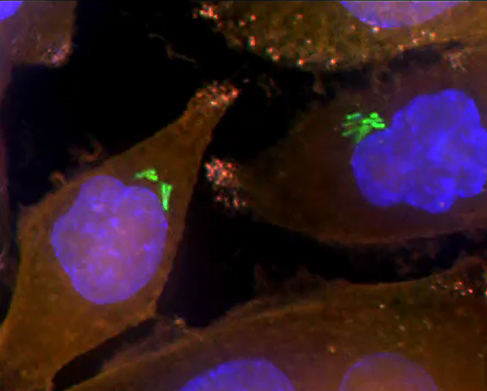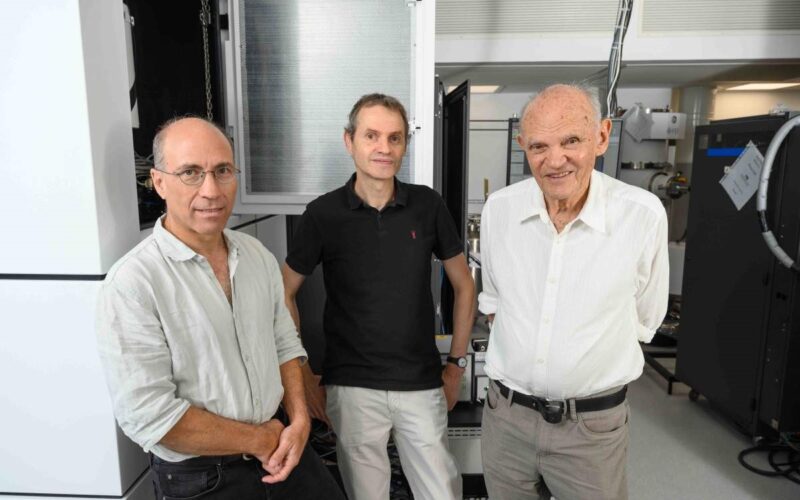
September 15, 2017
There is another reason why chemotherapy sometimes does not work: bacteria.
In a study published in Science, researchers found that certain bacteria can be found inside human pancreatic tumours, with some containing an enzyme that inactivates a common drug used to treat various cancers, including pancreatic cancer. However, working with cancer mouse models, they demonstrated that treatment with antibiotics on top of chemotherapy, may be significantly better than chemotherapy alone.
The research was conducted in the laboratory of Dr Ravid Straussman of the Weizmann Institute of Science’s Molecular Cell Biology Department, led by his graduate student Leore Geller and conducted in collaboration with Dr Todd Golub and Dr Michal Barzily-Rokini of the Broad Institute of the Massachusetts Institute of Technology, with many other collaborators supporting different aspects of the study.
According to Dr Straussman, the bacteria the group found live in the tumours and even within tumour cells.
“Because the topic is so new, we first used different methods to prove that there really were bacteria inside the tumours. Then we decided to look at the effect that these bacteria might have on chemotherapy,” he said.
The researchers isolated bacteria from the tumours of pancreatic cancer patients, then tested how they affected the sensitivity of pancreatic cancer cells to gemcitabine, a chemotherapy drug. They found that some of these bacteria kept the drug from working, with further investigation showing they metabolise the drug, making it ineffective.
The researchers were then able to find the bacterial gene responsible – cytidine deaminase (CDD) – and demonstrated that CDD comes in two forms – a long and a short form. Only bacteria with the long form of the CDD gene were found to inactivate gemcitabinem, with the drug having no apparent effect on the bacteria.
The group examined over 100 human pancreatic tumors to show that bacteria with long CDD do live in the patient’s pancreatic tumours. They also used multiple methods to visualise the bacteria inside human pancreatic tumours, which is crucial, as bacterial contamination is a real issue for labortory studies.
In fact it was an earlier incidence of bacterial contamination that led Dr Straussman and his team to conduct this study. He and his group were looking for evidence that normal cells in the cancer’s environment contribute to chemotherapy resistance. While testing the effect of many normal, non-cancerous, human cells on the sensitivity of cancer cells to chemotherapy, they found a specific sample of normal human skin cells that rendered pancreatic cancer cells resistant to gemcitabine. Tracking down the cause led the team to bacteria that had accidently contaminated these skin cells.
“We nearly threw it away, but then we decided to follow it up, instead,” said Dr Straussamn.
After revealing how these bacteria degraded the drug, he began to wonder if other bacteria might have a similar mechanism for inactivating the drug, and whether such bacteria might be found inside human tumours.
In the present study, further experiments in cancer mouse models were done with two groups of bacteria: those containing the long form of the CDD gene and those in which the gene had been knocked out. Only the group with the CDD gene intact exhibited resistance when the drug was given to the mice. After treatment with antibiotics, this group also responded to the chemotherapy drug.
Many questions remain and Straussman and his group are now asking whether bacteria may be found in other cancer types and, if so, what effects they might have on the cancer and its sensitivity to other anti-cancer drugs including a novel family of immune-mediated anti-cancer drugs.

Bacteria (green) inside human pancreatic cancer cells (AsPC-1 cells). The cells’ nuclei are stained blue while their cytoplasm is stained orange






